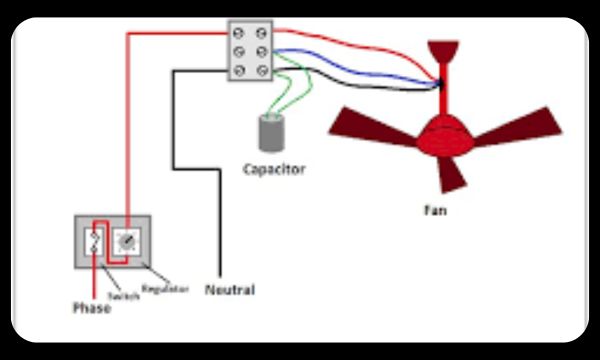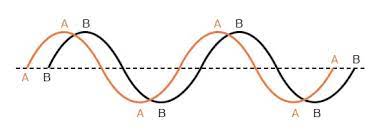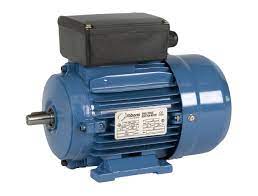Why do we use capacitors in fans?

Simple explanation

A fan motor is an induction motor. Induction motors work by creating a rotating magnetic field. This rotating magnetic field causes the fan blades to rotate. However, Single Phase induction motors cannot start on their own. They need a little bit of help to get started.
A capacitor can help a fan motor start by creating a phase difference between the current in the two windings of the motor. This phase difference creates a rotating magnetic field, which causes the fan to start rotating.
Here is an example to help you understand how a capacitor helps a fan motor start:
Imagine that you have a fan motor with two windings. One winding is called the main winding, and the other winding is called the starting winding. The main winding is connected directly to the power supply. The starting winding is connected to the power supply through a capacitor.
When you turn on the power, current flows through the main winding and the starting winding. The current in the main winding creates a magnetic field. The current in the starting winding creates a magnetic field that is 90 degrees out of phase with the magnetic field in the main winding.
The two magnetic fields combine to create a rotating magnetic field. This rotating magnetic field causes the fan blades to rotate.
Once the fan blades are rotating, the starting winding is no longer needed. The capacitor is disconnected from the starting winding, and the fan motor continues to run on the main winding.
Capacitors are commonly used in fans for several reasons
Starting the motor: Many fans, especially those with induction motors, need a higher starting torque to overcome inertia and get the fan blades moving. In the motor circuit, capacitors are used to provide this initial surge of current, which makes it possible for the motor to start smoothly.
Motor Running: The capacitor is still in the circuit when the fan motor is running. It helps control the voltage and current going to the motor, making sure it works consistently and well. The power factor of the motor can be improved with the help of capacitors. This cuts down on power losses and makes the motor more energy efficient as a whole.
Controlling the fan’s speed is done with capacitors, switches, or electronic speed control mechanisms in some types of fans, like ceiling fans. The fan’s motor can run at different speeds by changing the value of the capacitor in the circuit.
Noise Reduction: Capacitors can also help cut down on the noise that the fan motor makes when it uses electricity. They act as filters, smoothing out voltage spikes and reducing electromagnetic interference. This can help reduce buzzing or humming sounds.
It’s important to know that capacitors are not used in all fans. Fans with permanent split-capacitor (PSC) motors or electronically commutated (ECM) motors may not need external capacitors because they have built-in capacitance or use different ways to control the motor. Whether or not capacitors are needed depends on how the fan is made and what it is used for.
How to identify a faulty fan capacitor?
You can tell if a fan capacitor is broken in a few ways. Some of the most common signs are:
- The fan won’t turn on.
- The fan turns on, but it doesn’t run well.
- The speed of the fan is slow.
- It sounds like a hum when the fan is on.
- The fan has a burnt smell.
If any of these things happen, it is likely that the fan capacitor is broken. You can be sure of this by using a multimeter to test the capacitor.
How to test a capacitor?
Set the multimeter to the capacitance setting to test a capacitor. Touch the probes to the capacitor’s end points. The capacitance of the capacitor will be shown on the multimeter. If the capacitance is less than what the capacitor says it should be, the capacitor is defective.

How to change fan Capacitor?
If the fan capacitor is found to be defective, it must be replaced. A replacement capacitor is available at most Electrical stores. To replace the capacitor, proceed as follows:
- Disconnect the power to the fan.
- Locate the capacitor. It is usually a small, black box that is located near the motor.
- Disconnect the wires from the capacitor.
- Install the new capacitor.
- Reconnect the wires to the capacitor.
- Reconnect the power to the fan.
Once you have replaced the capacitor, the fan should start working properly again.

20 short question and answers on fan capacitor
- What is a fan capacitor?
A fan capacitor is an electrical component that is used to start and run a fan motor. - What does a fan capacitor do?
A fan capacitor creates a phase difference between the current in the two windings of the motor. This phase difference creates a rotating magnetic field, which causes the fan to start rotating. - What are the different types of fan capacitors?
There are two main types of fan capacitors: start capacitors and run capacitors. Start capacitors are used to start the fan motor, while run capacitors are used to keep the fan motor running. - How do I know if my fan capacitor is bad?
If your fan does not start, runs slowly, or makes a humming noise, then it is likely that your fan capacitor is bad. You can test the capacitor with a multimeter to confirm. - How do I replace a fan capacitor?
To replace a fan capacitor, you will need to disconnect the power to the fan, locate the capacitor, disconnect the wires from the capacitor, install the new capacitor, reconnect the wires to the capacitor, and then reconnect the power to the fan. - What size fan capacitor do I need?
The size of fan capacitor you need will depend on the size of your fan motor. You can find the size of your fan motor on the nameplate of the motor. - Where can I buy a fan capacitor?
You can buy fan capacitors at most hardware stores. - How much does a fan capacitor cost?
The cost of a fan capacitor will vary depending on the size and type of capacitor. - How long do fan capacitors last?
Fan capacitors typically last for 5 to 10 years. - What are the benefits of using a fan capacitor?
Using a fan capacitor can improve the efficiency, power factor, and lifespan of your fan motor. - What are the risks of using a fan capacitor?
There are no known risks associated with using a fan capacitor. - What are some common mistakes people make when replacing a fan capacitor?
Some common mistakes people make when replacing a fan capacitor include: Not disconnecting the power to the fan before replacing the capacitor. Not locating the capacitor. Not disconnecting the wires from the capacitor. Not installing the new capacitor correctly. Not reconnecting the wires to the capacitor. Not reconnecting the power to the fan. - How can I prevent common mistakes when replacing a fan capacitor?
To prevent common mistakes when replacing a fan capacitor, you should:
Always disconnect the power to the fan before replacing the capacitor.
Locate the capacitor before replacing it.
Disconnect the wires from the capacitor before installing the new capacitor.
Install the new capacitor correctly.
Reconnect the wires to the capacitor correctly.
Reconnect the power to the fan after replacing the capacitor.
14. What are some troubleshooting tips for fan capacitors?
Some troubleshooting tips for fan capacitors include:
Check the power supply to the fan.
Check the wiring to the fan.
Check the capacitor for signs of damage.
Test the capacitor with a multimeter.
15. What are some common causes of fan capacitor failure?
Some common causes of fan capacitor failure include:
Overheating
Overloading
Defects in the capacitor
16. How can I prevent fan capacitor failure?
To prevent fan capacitor failure, you should:
Avoid overloading the fan.
Avoid overheating the fan.
Purchase a quality capacitor.
17. What are some safety tips for working with fan capacitors?
Some safety tips for working with fan capacitors include:
Always disconnect the power to the fan before working on it.
Wear safety glasses when working on the fan.
Be careful not to touch the capacitor terminals while the fan is plugged in.
18. What are some resources for learning more about fan capacitors?
Some resources for learning more about fan capacitors include:
The internet
Books
Magazines
Trade shows
19. What are some fan capacitor manufacturers?
Some fan capacitor manufacturers include:
American Capacitor
Emerson Electric
Illinois Capacitor
United Technologies
20. What are some fan capacitor distributors?
Some fan capacitor distributors include:
Digi-Key
Mouser Electronics
Newark
Sam’s Club
I hope this helps!
You may like to know
10 tips for keeping your air conditioner running efficiently
- Air filters should be changed often. If your air conditioner has to work harder because your air filter is dirty, your energy bills may go up.
- Make sure to clean your air conditioner. The coils can get dirty, making it harder for the air conditioner to cool your home.
- Stop any air leaks. Leaks in your home’s air can let hot air in and cool air out, making your air conditioner work harder.
- Set your thermostat to a temperature that is comfortable for you. You can save up to 3% on your energy bill for every degree you raise your thermostat.
- Use fans to move the air around. Fans can help you stay cool so you don’t have to turn on your air conditioner as much.
- During the day, close the blinds and curtains. This will help keep the sun’s heat out of your house, which can make your air conditioner work less.
- When you’re not using an appliance, unplug it. Even when they are turned off, appliances can still give off heat. When they’re not being used, unplugging them can help keep your home cooler.
- Always get your air conditioner serviced. A professional can look at your air conditioner to see if there are any problems and make sure it is working right.
- Get an air conditioner that works better. If your AC is old, it might not work as well as newer models. By upgrading to an air conditioner that uses less energy, you can save money on your energy bills.
- Think about an air conditioner for the whole house. If you have a big house, it might be better to get one air conditioner for the whole house than several window units.
By using these tips, you can keep your air conditioner running well and save money on your energy bills.